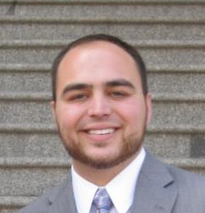 Trauma is not only a psychological development, but a biological one as well. Trauma begins when cortisol (a hormone that triggers stress) is released into the brain (Siegel & Solomon, 2003). What triggers trauma can look different for every individual, and that is normal; one doesn’t have to suffer from a car crash, or be shot at. Being yelled at or belittled by those who are important can cause trauma for an individual, as well as more severe forms of physical, emotional, and sexual abuse. Trauma is experienced at the core as an emotional response that causes pain and discomfort in one’s life, and can manifest slightly different for everyone (Siegel & Solomon, 2003) . The first key to understanding your pain is that it is okay to be in pain. It is okay to feel whatever it is you feel, and that is normal. How nice is that to hear? It is okay that I feel angry, hurt, ashamed, sad, distraught, uncontrollable rage, grief, anxiety, devalued, depressed, and violated. Acceptance is the first part of therapy- recognizing the need for help and that there is a problem.
Trauma is not only a psychological development, but a biological one as well. Trauma begins when cortisol (a hormone that triggers stress) is released into the brain (Siegel & Solomon, 2003). What triggers trauma can look different for every individual, and that is normal; one doesn’t have to suffer from a car crash, or be shot at. Being yelled at or belittled by those who are important can cause trauma for an individual, as well as more severe forms of physical, emotional, and sexual abuse. Trauma is experienced at the core as an emotional response that causes pain and discomfort in one’s life, and can manifest slightly different for everyone (Siegel & Solomon, 2003) . The first key to understanding your pain is that it is okay to be in pain. It is okay to feel whatever it is you feel, and that is normal. How nice is that to hear? It is okay that I feel angry, hurt, ashamed, sad, distraught, uncontrollable rage, grief, anxiety, devalued, depressed, and violated. Acceptance is the first part of therapy- recognizing the need for help and that there is a problem.
The founder of EMDR, Francine Shapiro, stated in Siegel & Solomon in 2003, “The basic goal of treatment is for the client to achieve the most profound and comprehensive effects possible, in the shortest period of time, while maintaining stability, within a balanced system”. Therapy and the healing process begin the second you enter the therapy room. Being recognized, valued, and listened to is healing.Those 3 simple aspects of therapy are especially beneficial to people whose needs are not being met by the social circles closest to them. Trauma work in the office continues by getting to know one another, building safety into one’s life, processing the trauma, and then being able to reconnect with one’s environment. These phases of therapy are all important and vital to recovering from traumatic events.
Through the work of Laurel Parnell in Attachment-Focused EMDR, I have been able to implement new EMDR techniques focusing on integrating attachment-repair with adults who have had relational trauma (Parnell, 2013). In my clinical practice, the most profound and lasting changes I have seen in people’s lives have been when using Eye Movement Desensitization and Reprocessing Psychotherapy (EMDR). EMDR is not only a proven effective form of therapy, but I personally believe in it. I have seen people make drastic improvements and strides in their lives through this model of therapy. “Trusting the therapist and trusting the process are the keys to successful EMDR treatment” (Parnell, 2013).
Suffering from a difficult past may be damaging many aspects of one’s life, including relationships, parenting abilities, career opportunities, and one’s own happiness. The good news is that treatment is available and healthy changes can be made. Life can be enjoyed and quality of life can be improved. Counseling can be the act you choose to begin the healing process.
Refrences
Laurel Parnell (2013). Attachment Focused EMDR: Healing Relational Trauma, W.W. Norton and Company.
Solomon, M., & Siegel, D.J. (Eds.). (2003). Healing trauma: Attachment, mind, body and brain. New York: W.W. Norton & Company.
 Ben De Jesus is a is a bilingual therapist (Spanish) who specializes in working with children, families, and individuals who have experienced trauma.
Ben De Jesus is a is a bilingual therapist (Spanish) who specializes in working with children, families, and individuals who have experienced trauma.
Ben has advanced training in Acceptance and Commitment Therapy, Dialectical Behavior Therapy, Trauma Focused Cognitive Behavior Therapy, and Eye Movement Desensitization and Reprocessing (EMDR) Therapy. He uses these psychotherapy approaches to treat Anxiety Disorders, Trauma/PTSD, Depression, Relationship Conflict, and Parenting Skills.
Click here to find out more about the services offered by Ben De Jesus.
